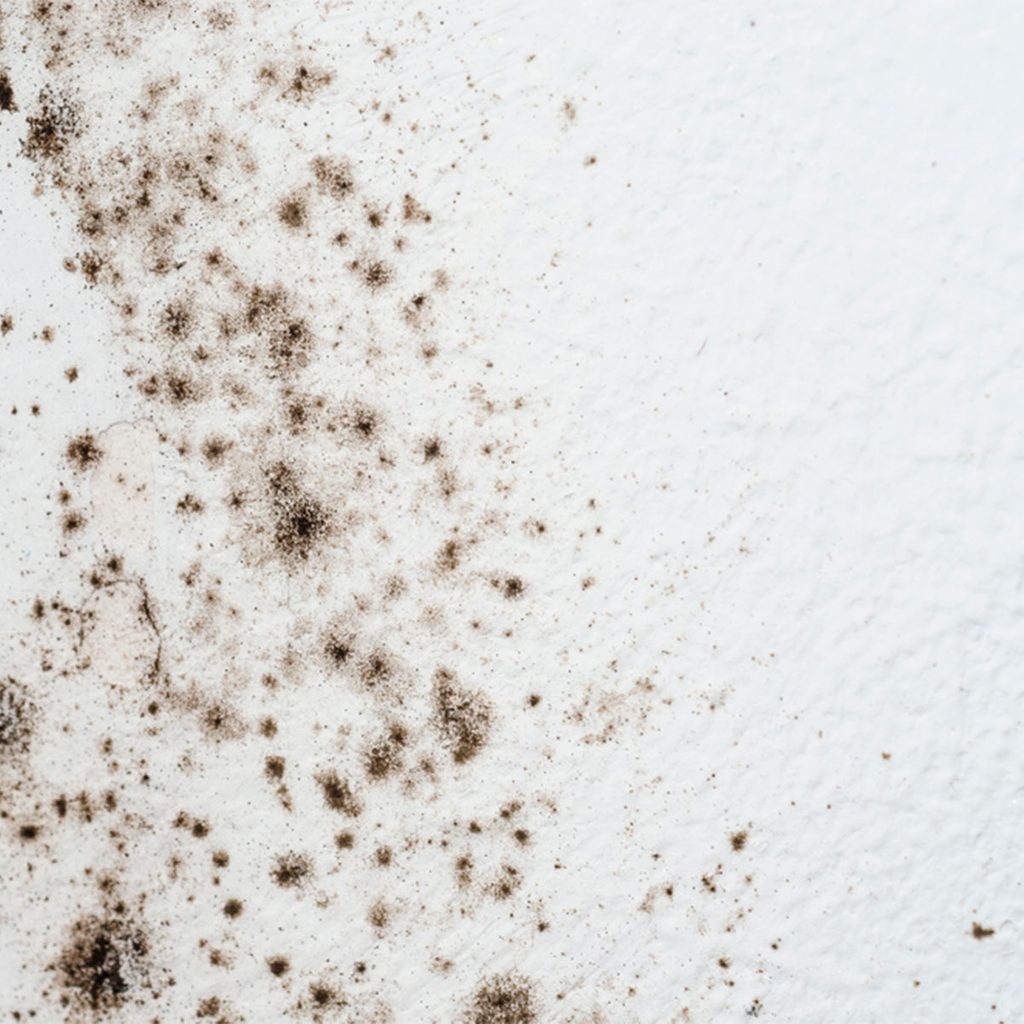How to Get Rid of Mold on Bathroom Walls
Updated: Feb. 14, 2024

Bathroom mold is an unsightly and unhealthy problem that should be addressed as soon as you spot it. For mold on painted walls, try a natural remover. Learn more here.
Bathroom mold is an unsightly and unhealthy problem that should be addressed as soon as you spot it. The most common places to find mold are tile grout, caulk and painted or wallpapered walls.
“Bathroom mold occurs primarily because mold loves damp, dark, isolated spaces,” says Larry Vetter of Vetter Environmental Services in Smithtown, N.Y. “Typically, a bathtub, shower, or entire bathroom remains damp enough for mold growth just from showering or bathing.”
Chances are, if you’re reading this, you already have a mold problem in your bathroom. In that case, there are some simple steps you can take to get rid of that mold.
On This Page
Removing Mold on Tiled Walls
You can use a few tools to remove mold on tiled walls but be cautious if you have colored grout.
Bleach
A good place to start is chlorine bleach. You can purchase a chlorine bleach cleaner specifically meant for bathroom mold, such as Tilex Mold & Mildew Remover. So long as you don’t have colored grout (which will likely fade if you use bleach), you can spray the cleaner directly onto the moldy grout.
- Let the cleaner containing bleach sit for at least 30 minutes
- Scrub with a stiff brush
- Rinsing with warm water
Vinegar
For a more natural way to get rid of mold in the bathroom, you can use distilled vinegar.
- Use a spray bottle to saturate the moldy area with white vinegar
- Let it sit for 30 minutes
- Scrub with a brush
- Spray again, let sit for an additional 30 minutes
- Rinse with warm water
You can even make a cleaning paste by stirring together 1/2 cup baking soda and several teaspoons of water. Spread the paste over the moldy grout, let sit for 10 minutes, then scrub the mold away with a brush. Rinse with water.
Removing Mold From Painted or Wallpapered Walls
For mold on painted walls, try a natural remover like white vinegar, borax and water. You’ll need a spray bottle and a few other items to scrub the walls.
- Combine two tablespoons of borax with 1/4 cup white vinegar and two cups of hot water in a bowl.
- Pour into a spray bottle
- Liberally apply on painted walls.
- Scrub thoroughly and wipe clean, then spray again and let sit for 10 minutes before wiping dry.
Removing Mold Safely
You can scrub away the surface mold common to bathrooms, decks and siding in a matter of minutes with a 1-to-8 bleach/water mold cleaner solution as one way on how to remove mold. But often mold grows and spreads in places you don’t notice, until you spot surface staining, feel mushy drywall or detect that musty smell.
If you have to remove mold concentrations or perform any black mold removal covering more than a few square feet, where the musty odor is strong or where you find extensive water damage, we recommend that you take special precautions. You want to not only avoid contaminating the rest of the house but also protect yourself from breathing high concentrations of spores and VOCs.
- Wear old clothes and shoes that you can launder or throw away after the cleanup work.
- Wear special N-95 or P-100 respirators, in addition to goggles and gloves.
- Set an old box fan or a cheap new one in a window to ventilate the room while working. Throw it out when you’re done cleaning, because the spores are almost impossible to clean off. Tape plywood or cardboard around the window openings so the spores can’t blow back in.
- Wrap and tape moldy carpeting in 6-mil plastic, and double-bag mold-infested debris in garbage bags for disposal.
- To control airborne spores, moisten moldy areas with a garden sprayer while you work.
- Turn off your furnace and air conditioner and cover ducts and doors to contain spores.
- Keep your wet/dry vacuum outside when you vacuum.
Bathroom Mold Prevention and Remediation
After you learn how to remove mold, you’ll want to prevent mold in the future. The key to stopping most mold is to control dampness. The worst infestations usually occur in damp crawlspaces, in attics and walls where water has leaked in from the outside, and in basements with poor foundation drainage. Stopping leaks, ensuring good ventilation in attics, keeping crawlspaces dry and routing water away from the foundation are the best defenses on how to get rid of mold.
Almost every home gets mold, and that means there’s a need for mold remediation. We’ll show you how to remove major mold infestations.
Mildewcide in paint is usually effective for controlling surface mold in damp rooms like bathrooms and outside in shady areas. Many paints already have mildewcide in them. Check with your paint dealer to be sure of mold removal products. You can add mildewcide, although you might void the paint warranty.
Every product is independently selected by our editors. If you buy something through our links, we may earn an affiliate commission.